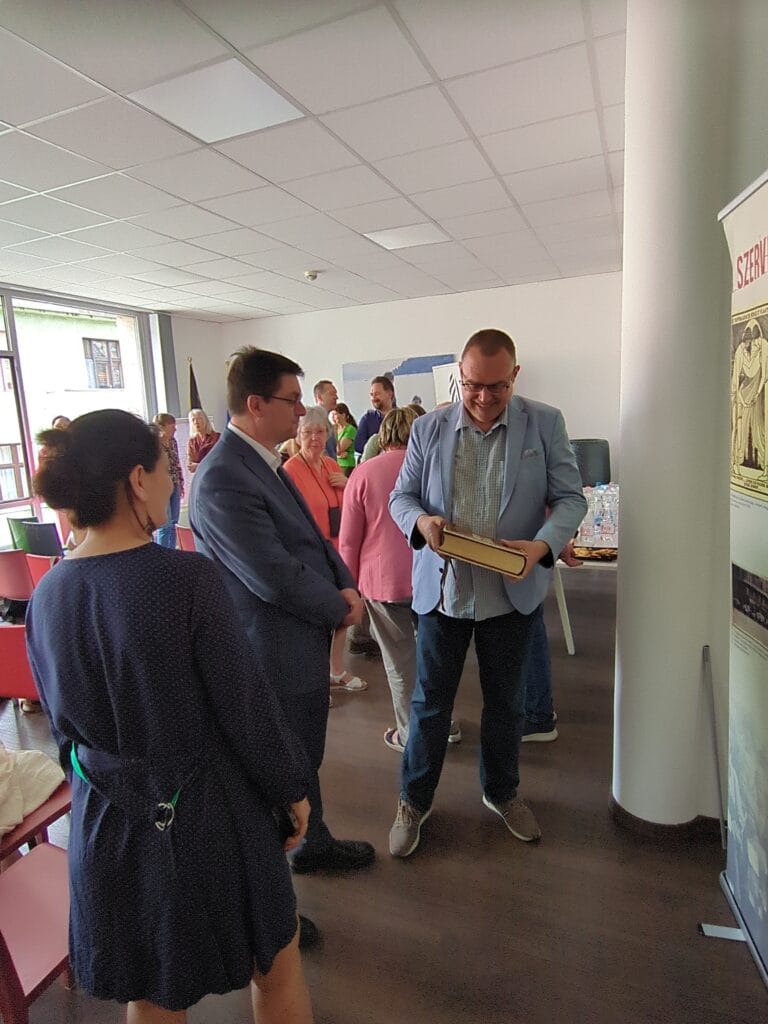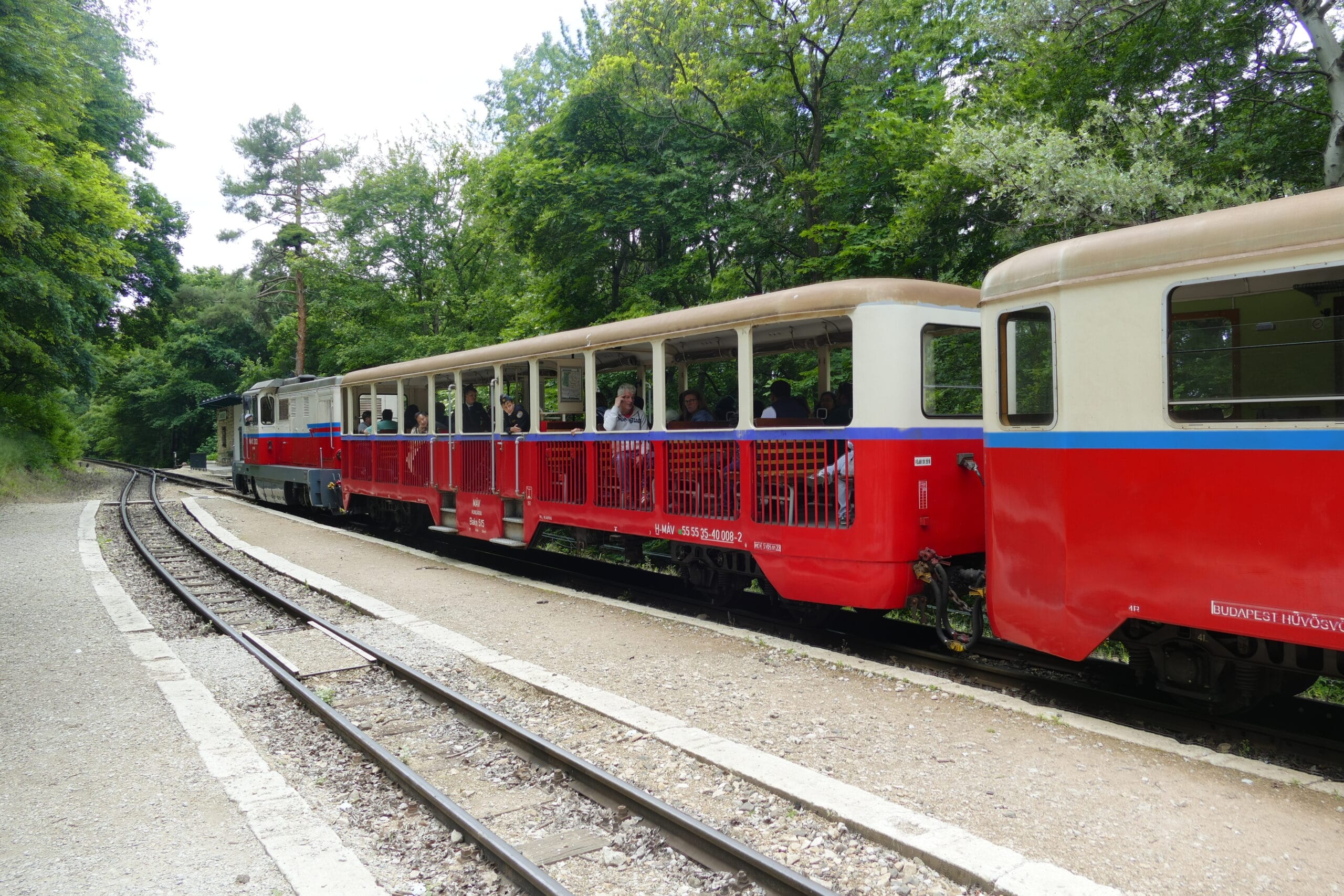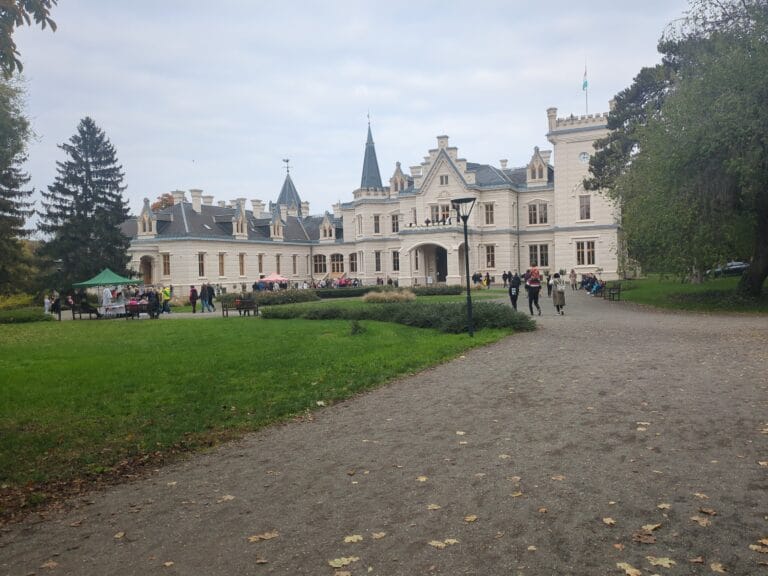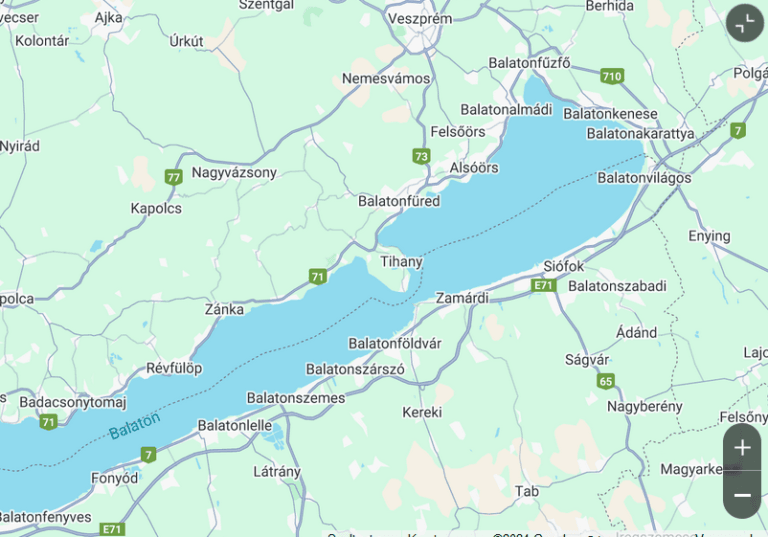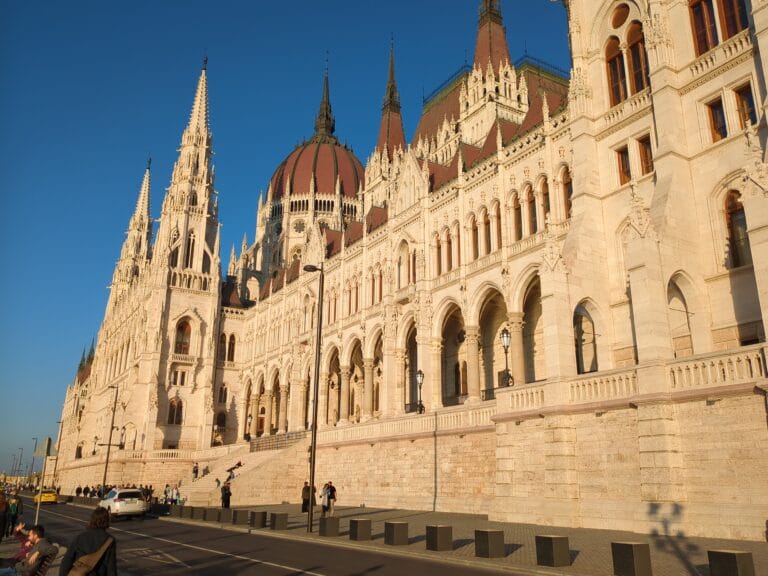Kids and trains…
Our Hungarian teacher had a school trip planned for the end of the school year – a long weekend in Budapest with the whole group. For us, and many others, it was a good hour’s drive, but for others it was a trip from Belgium.
We learned a lot, including about the ‘children’s railway’ and the ‘children’s trains’. And no, the one has absolutely nothing to do with the other.
Children’s railway
The children’s railway (‘Gyermekvasút’) is a remnant of communist times. At that time, there was only one permitted youth movement, the pioneers, and one of the activities of that youth movement was to operate the pioneer railway. Young people aged 10 to 14 worked for several weeks or months as station clerks or ticket inspectors.
The railway is a narrow-gauge line over 11 km long connecting Széchenyhegy and Hüvősvőlgy, and for years it was listed in the Guinness Book of Records as the longest railway in the world operated by young people – until a Russian children’s railway was extended.
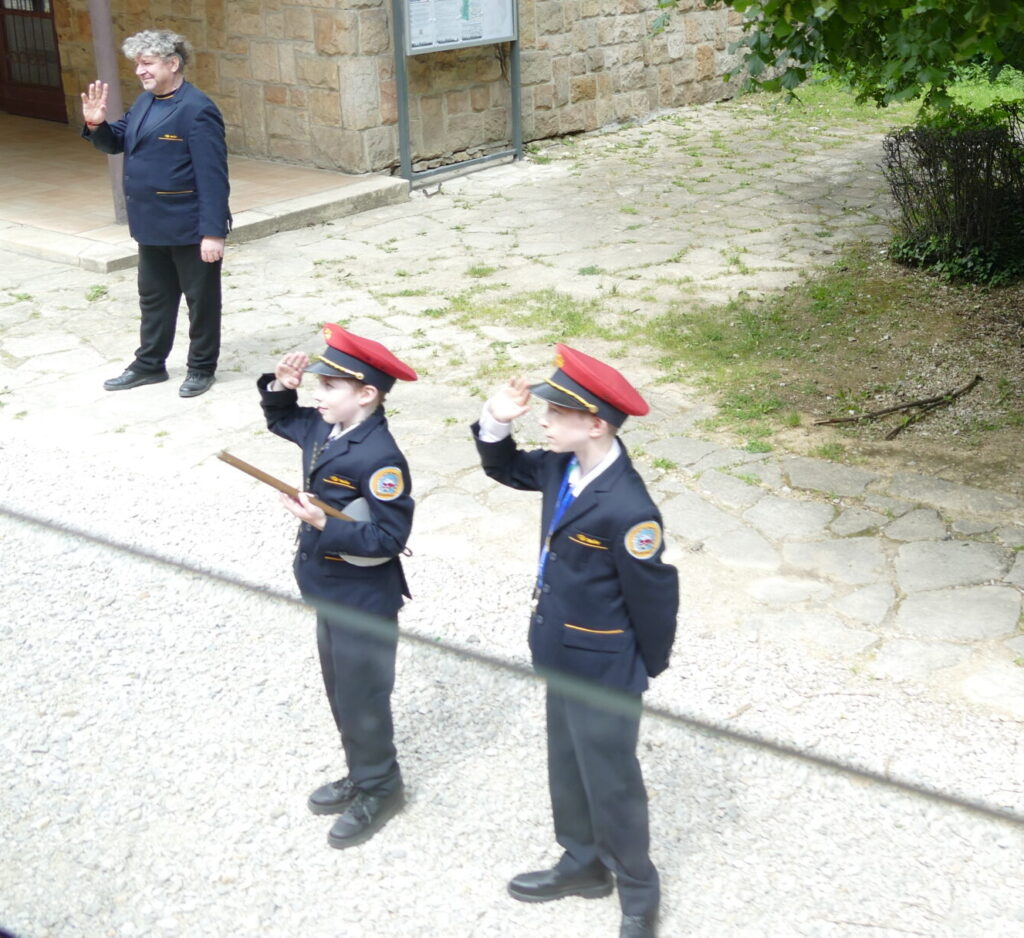
After the fall of communism, questions were raised about the employment of these children, but the project continued nonetheless. And with success. Every year, there are more young people who want to work on the children’s railway for a while, just for the honour, than there are places available. The young people enjoy doing it, they also get time off school because it is an honour for the school to have one of its pupils selected, and it turns out to be very good preparation for a future technical career.
Children’s trains
The children’s trains, on the other hand, are a less positive story in Hungarian and Belgian/Dutch history. The Flemish representative and the Belgian ambassador took some time to tell us about this.
After the First World War, Hungary lost two-thirds of its territory as a result of the Treaty of Trianon. It also lost most of its industrial and mining areas, and many important railway lines came to a standstill because the line was interrupted by the new border. Hungary thus became extremely impoverished. In rural areas, the situation was not so bad, but in Budapest, people were starving.
Well-meaning Protestant (in the Netherlands) and Catholic (in Flanders) circles came up with a solution: bring the children to the Low Countries for a few months, where they could get proper food and regain their strength in host families. Especially after the First World War, but also after the Second, and again after the Hungarian uprising of 1956, children’s trains were used again. A total of 60,000 children came to the Low Countries.
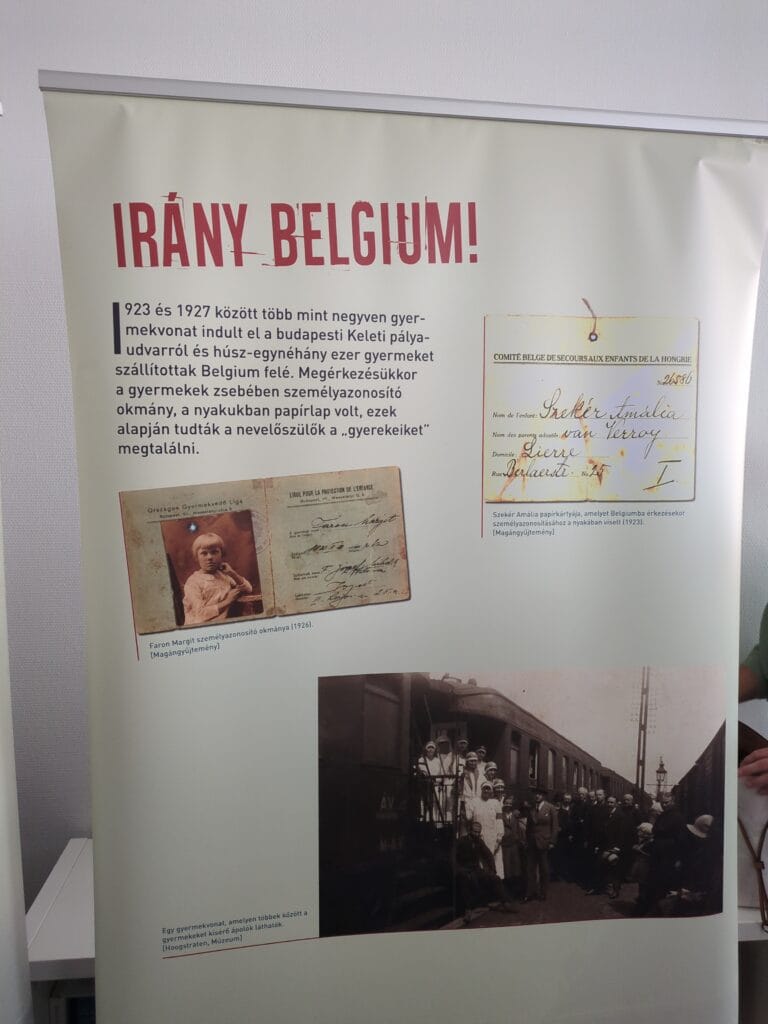
Unfortunately, the reality was somewhat less rosy. Imagine you are 8 years old and your parents take you to the station, where they put you on a train where you don’t know anyone. You have to fend for yourself, without knowing what is going to happen. You arrive in a foreign country where you don’t understand a word of the language, staying with a strange host family. That was traumatic enough. But even worse was that in many cases, you were simply used as a domestic slave.
About 1% of those children never returned to their parents in Hungary. In our group, there were also two people whose mothers had been put on the train and stayed in Flanders permanently. One of them is now making a film to reconstruct her mother’s life as accurately as possible and preserve it for posterity.
